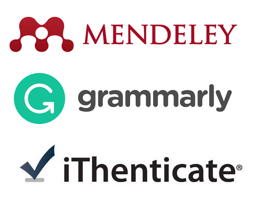A Modified of Mixed Strategy Algorithm for Power Allocation on D2D Underlay Communication
DOI:
https://doi.org/10.52435/complete.v2i1.206Abstract
As time passes by, the need for telecommunication services will increase along with increasement of human’s population. To anticipate the flooding requests of telecommunication services, one of the solutions offered is by implementing D2D communication, especially in 5G architecture. In D2D 5G, focusing on underlay communication D2D uses the same frequency spectrum, so that opportunity of interference may happen, but the value of spectral efficiency (SE) may increase as a result of the effectiveness of the spectral that occurs. In terms of financing and its development, underlay D2D communication is considered more profitable for service providers. Based on this point, the authors propose a novel algorithm of modified mixed strategy algorithm for power allocation to make the power transmission cost be more effective. After the experiment conducted, the result shows that modified mixed strategy outperform baseline model which uses no power allocation algorithm.
References
Nurya P., “Pengaruh Kualitas Layanan Internet Service Provider Seluler Pada Kepuasan Mahasiswa Terhadap Perkuliahan Daring Masa Pandemi Covid-19”. Fakultas Sains Dan Teknologi Universitas Islam Negeri Sunan Ampel, Surabaya, 2021.
R. I. Ansari et al., “5G D2D Networks: Techniques, Challenges, and Future Prospects,” IEEE Systems Journal, vol. 12, no. 4, pp. 3970–3984, Dec. 2018.
U. N. Kar and D. K. Sanyal, “An overview of device-to-device communication in cellular networks,” ICT Express, vol. 4, no. 4. Korean Institute of Communications Information Sciences, pp. 203–208, Dec. 01, 2018.
X. Song, X. Han, Y. Ni, L. Dong, and L. Qin, “Joint uplink and downlink resource allocation for D2D communications system,” Future Internet, vol. 11, no. 1, Jan. 2019.
O. Hayat, R. Ngah, and Y. Zahedi, “In-Band Device to Device (D2D) Communication and Device Discovery: A Survey,” Wireless Personal Communications, vol. 106, no. 2, pp. 451–472, May 2019.
S. Liu, Y. Wu, L. Li, X. Liu, and W. Xu, “A Two-Stage Energy-Efficient Approach for Joint Power Control and Channel Allocation in D2D Communication,” IEEE Access, vol. 7, pp. 16940–19951, 2019.
K. K. Nguyen, T. Q. Duong, N. A. Vien, N. A. Le-Khac, and M. N. Nguyen, “Non-cooperative energy efficientpower allocation game in D2D communication: A multi-agent deep reinforcement learning approach,” IEEE Access, vol. 7, pp. 100480–100490, 2019.
M. Erza, F. Putrafasa, A. Fahmi, V. Sigit, and W. Prabowo, “eProceedings of Engineering, 2020.
Universitas Telkom. IoT Center, IEEE Communications Society. Indonesia Chapter, and Institute of Electrical and Electronics Engineers, Proceedings, 2019 IEEE Asia Pacific Conference on Wireless and Mobile (APWiMob), 2019.
S. Selmi and R. Bouallegue, “Interference Aware Algorithm For D2D Communications Underlay Cellular Network A Mixed Strategy Approach.”IEEE International Conference on Software, Telecommunications and Computer Networks (SoftCOM), 2019.32
F. Haider, C. X. Wang, H. Haas, E. Hepsaydir, X. Ge, and D. Yuan, “Spectral and energy efficiency analysis for cognitive radio networks,” IEEE Transactions on Wireless Communications, vol. 14, no. 6, pp. 2969–2980, Jun. 2015.
Downloads
Published
Issue
Section
License
Copyright (c) 2022 Nur Rahma, I Suparta, Nachwan Adriansyah, Vinsensius Prabowo

This work is licensed under a Creative Commons Attribution 4.0 International License.







